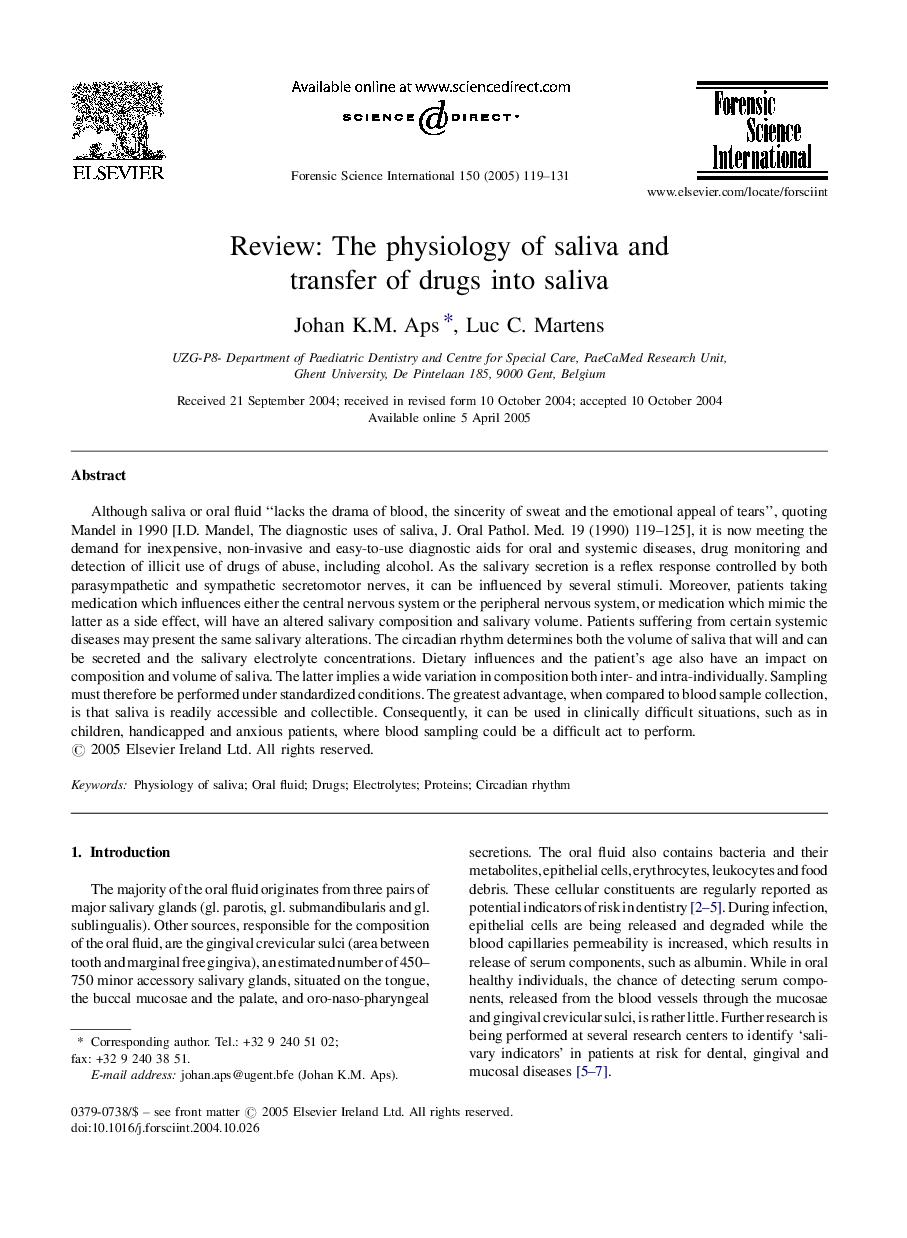| کد مقاله | کد نشریه | سال انتشار | مقاله انگلیسی | نسخه تمام متن |
|---|---|---|---|---|
| 9622552 | 160559 | 2005 | 13 صفحه PDF | دانلود رایگان |
عنوان انگلیسی مقاله ISI
Review: The physiology of saliva and transfer of drugs into saliva
دانلود مقاله + سفارش ترجمه
دانلود مقاله ISI انگلیسی
رایگان برای ایرانیان
کلمات کلیدی
موضوعات مرتبط
مهندسی و علوم پایه
شیمی
شیمی آنالیزی یا شیمی تجزیه
پیش نمایش صفحه اول مقاله

چکیده انگلیسی
Although saliva or oral fluid “lacks the drama of blood, the sincerity of sweat and the emotional appeal of tears”, quoting Mandel in 1990 [I.D. Mandel, The diagnostic uses of saliva, J. Oral Pathol. Med. 19 (1990) 119-125], it is now meeting the demand for inexpensive, non-invasive and easy-to-use diagnostic aids for oral and systemic diseases, drug monitoring and detection of illicit use of drugs of abuse, including alcohol. As the salivary secretion is a reflex response controlled by both parasympathetic and sympathetic secretomotor nerves, it can be influenced by several stimuli. Moreover, patients taking medication which influences either the central nervous system or the peripheral nervous system, or medication which mimic the latter as a side effect, will have an altered salivary composition and salivary volume. Patients suffering from certain systemic diseases may present the same salivary alterations. The circadian rhythm determines both the volume of saliva that will and can be secreted and the salivary electrolyte concentrations. Dietary influences and the patient's age also have an impact on composition and volume of saliva. The latter implies a wide variation in composition both inter- and intra-individually. Sampling must therefore be performed under standardized conditions. The greatest advantage, when compared to blood sample collection, is that saliva is readily accessible and collectible. Consequently, it can be used in clinically difficult situations, such as in children, handicapped and anxious patients, where blood sampling could be a difficult act to perform.
ناشر
Database: Elsevier - ScienceDirect (ساینس دایرکت)
Journal: Forensic Science International - Volume 150, Issues 2â3, 10 June 2005, Pages 119-131
Journal: Forensic Science International - Volume 150, Issues 2â3, 10 June 2005, Pages 119-131
نویسندگان
Johan K.M. Aps, Luc C. Martens,